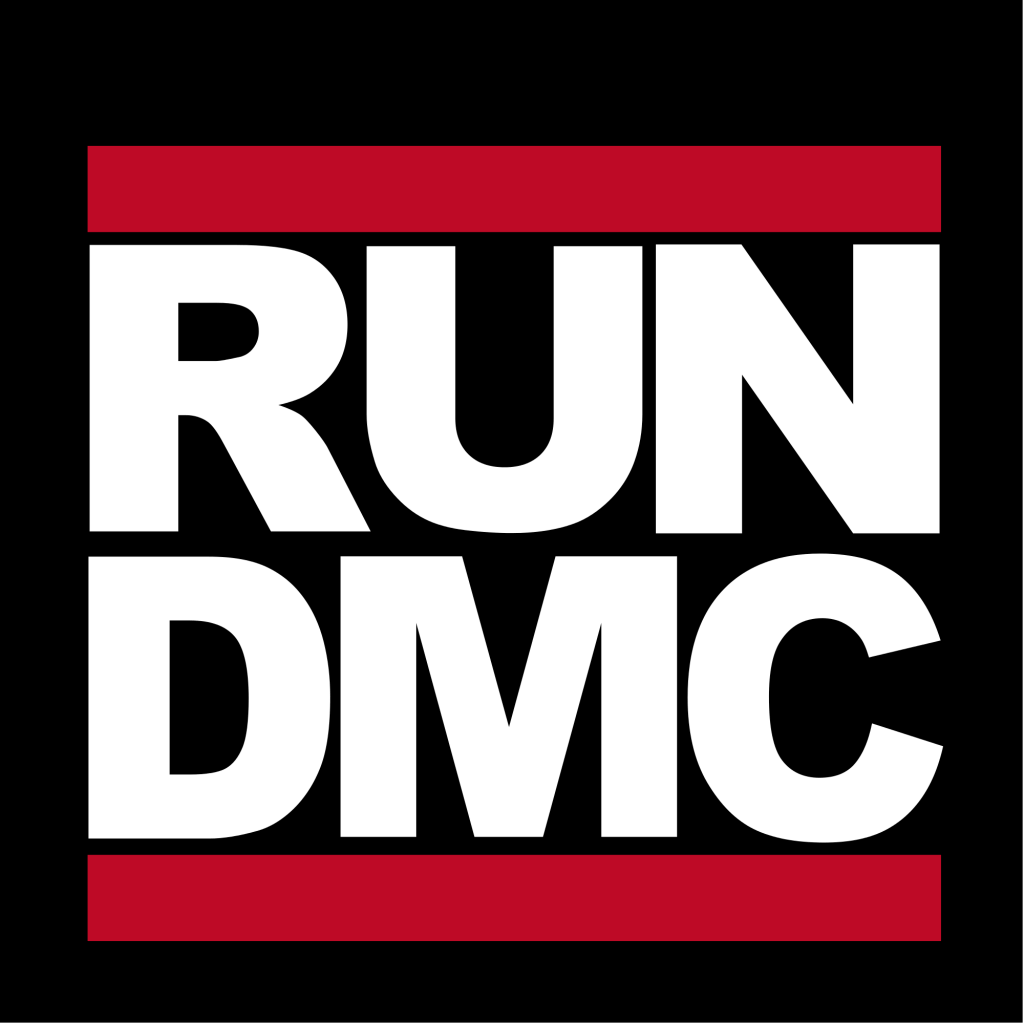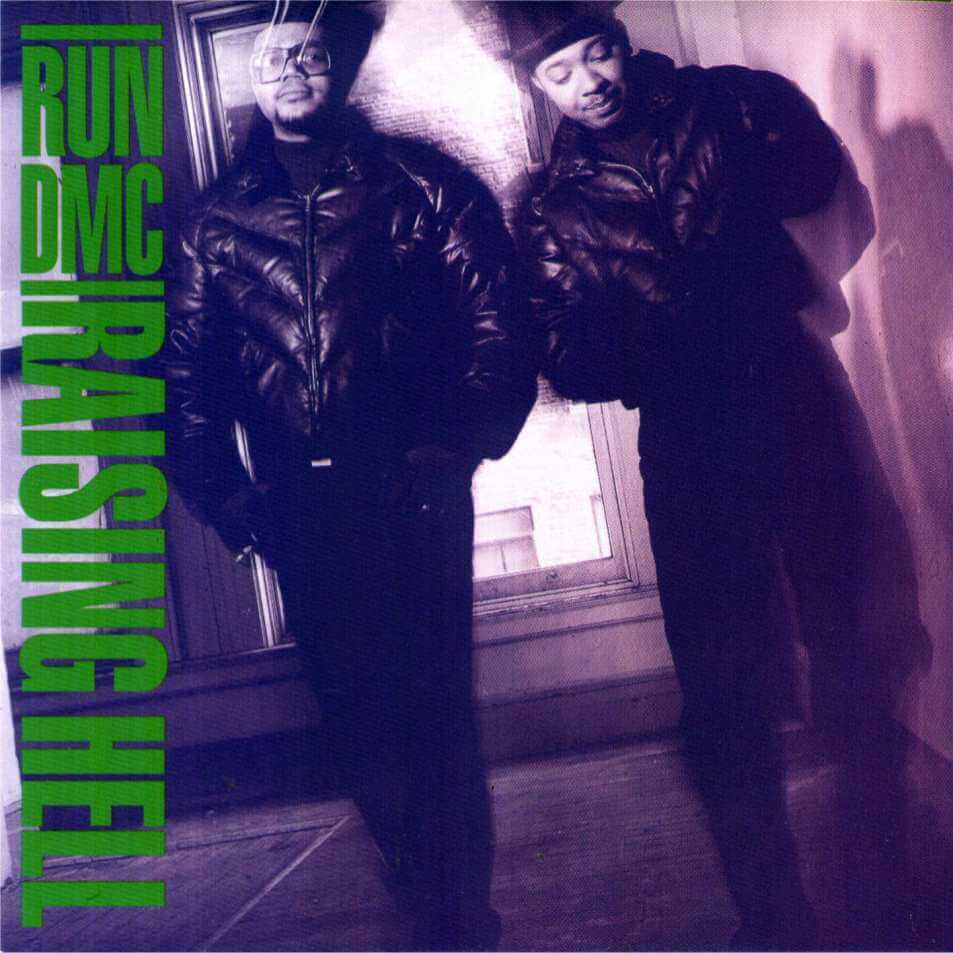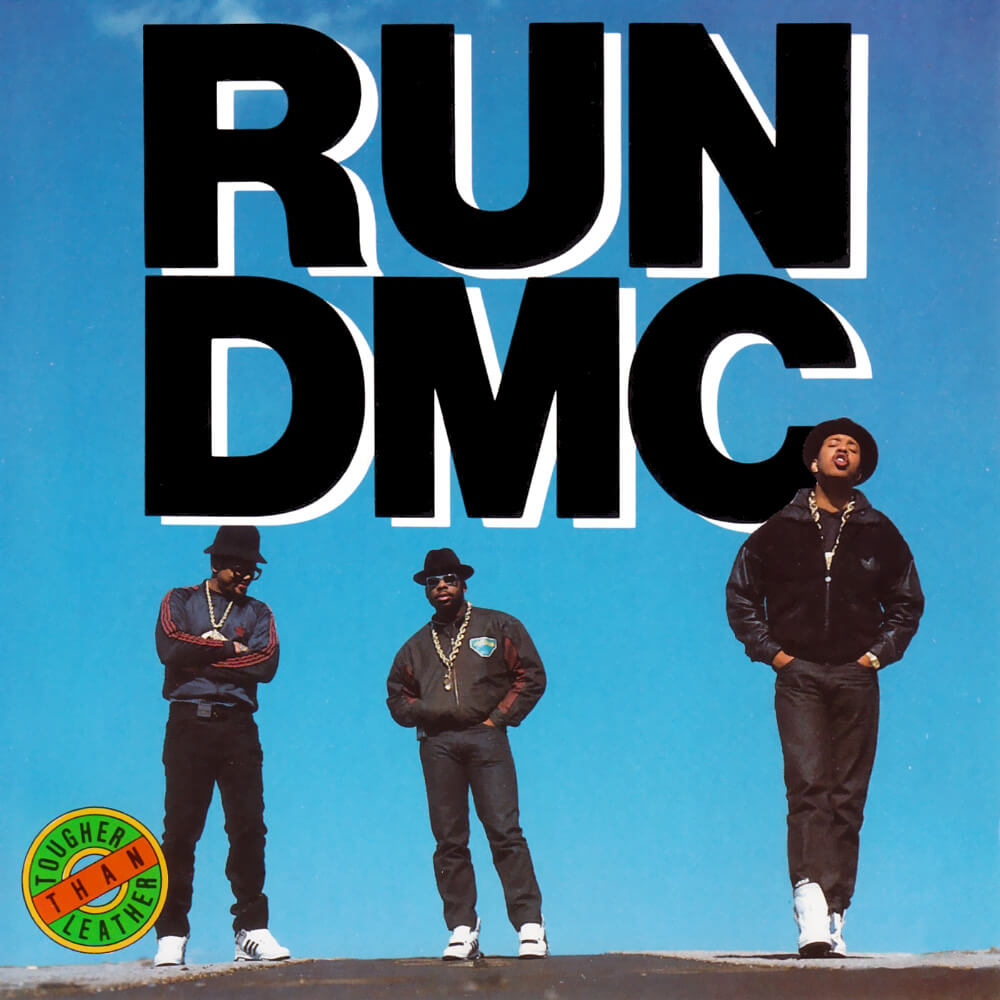Run-DMC’s career has left an indelible mark on Hip Hop, shaping the sound and culture surrounding the genre. Formed in the early 1980s, the group consisted of Joseph “Run” Simmons, Darryl “DMC” McDaniels, and Jason “Jam Master Jay” Mizell. From their beginnings in Hollis, Queens, they became pioneers in blending rap with rock, and their influence is still felt in modern music today.
The Early Days and Rise to Fame
Run-DMC emerged at a time when Hip Hop was largely underground and seen as a passing fad. Most Hip Hop acts were either one-hit wonders or restricted to local audiences. Enter Run-DMC, whose sound was bold and innovative, breaking from the funk and disco-heavy beats that dominated early Hip Hop. Their first single, “It’s Like That” b/w “Sucker M.C.’s,” dropped in 1983 and immediately grabbed attention. “It’s Like That” featured stripped-down production with minimalistic beats, while “Sucker M.C.’s” delivered sharp lyrics over an even sparser track. This was a game-changer.
Their self-titled debut album, Run-D.M.C. (1984), continued the trend of simple but powerful beats, layered with Run and DMC’s distinct vocal styles. The album included hits like “Hard Times” and “Rock Box,” the latter becoming one of the first rap songs to feature a heavy guitar riff. This blending of rock elements with Hip Hop was a groundbreaking move that would later become a signature of their sound. The group also stood out visually; while most rappers at the time dressed in flashy clothes, Run-DMC’s look of leather jackets, fedoras, and Adidas sneakers became iconic.
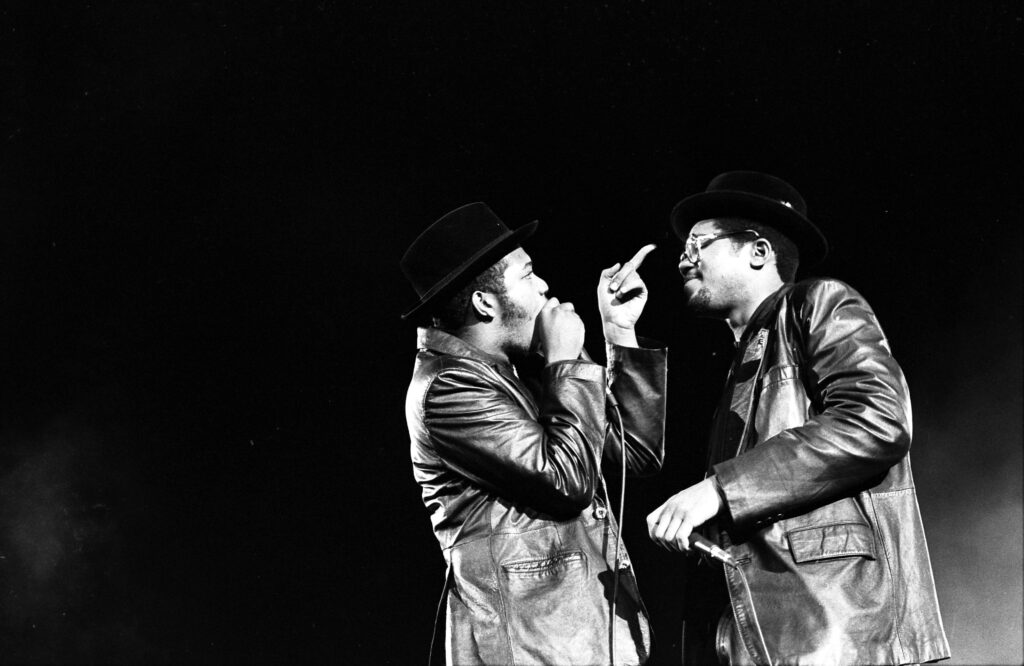
Run-DMC performing in Long Beach, 1984
Their second album, King of Rock (1985), built on the foundation of their debut, with even more rock-influenced tracks. Songs like “King of Rock” further showcased their crossover appeal, allowing them to attract fans from both the rap and rock worlds. The title track’s music video, with the group storming a rock museum and declaring themselves the new kings of music, illustrated their bold confidence.
Breaking Barriers and Mainstream Success
Run-DMC’s real breakthrough came with their third album, Raising Hell (1986). This album was a massive commercial success and took Hip Hop into the mainstream like never before. Produced by Rick Rubin, Raising Hell had a cleaner, more polished sound without losing the group’s raw edge. It featured the iconic single “Walk This Way,” a collaboration with rock band Aerosmith. The track was a reworking of Aerosmith’s 1975 hit and became one of the first Hip Hop songs to reach a broad audience, crossing over to mainstream radio and MTV.
“Walk This Way” was significant because it brought Hip Hop to a wider audience and symbolized a bridging of cultures. The music video, where Run-DMC and Aerosmith literally break down a wall separating them, was symbolic of rap breaking into mainstream culture. Other tracks from Raising Hell, like “My Adidas” and “Peter Piper,” also became classics. The former led to the group signing a significant endorsement deal with Adidas, the first time a major corporation partnered with a Hip Hop act in this way.
The success of Raising Hell positioned Run-DMC as global superstars, and their music began to influence other Hip Hop artists and genres outside of rap. They were the first rap group to go platinum and the first to receive heavy rotation on MTV. This level of mainstream exposure was previously unheard of for Hip Hop artists, and it laid the groundwork for future generations of rappers to achieve similar success.
Impact on Hip Hop Culture
Run-DMC wasn’t only groundbreaking in terms of sound; the group played a crucial role in shaping the culture of Hip Hop. Their Adidas sneakers without laces, fedora hats, and black leather jackets became a standard look not just for fans but also for other rappers. Their hit song “My Adidas” turned into a celebration of streetwear and led to one of the earliest examples of brand partnership in rap music. This collaboration opened the door for Hip Hop artists to align themselves with major brands, which is now commonplace.
Beyond fashion, Run-DMC helped bring DJ culture to the forefront. Jam Master Jay, the group’s DJ, was an integral part of their performances and recordings, embodying the essential role of the DJ in Hip Hop at the time. His scratches and mixes added a dynamic layer to the group’s music, emphasizing the importance of the DJ/MC relationship in the genre’s early days.
Run-DMC also helped shift the public perception of Hip Hop. They were one of the first groups to be taken seriously as artists, breaking the stereotype of rap being a passing trend. Their success brought credibility to Hip Hop and paved the way for other artists to be seen as legitimate musicians, not novelty acts.
Challenges and Evolution
After the massive success of Raising Hell, Run-DMC faced the challenge of staying relevant in a rapidly changing Hip Hop landscape. Their fourth album, Tougher Than Leather (1988), was a darker, more aggressive effort that responded to some of the harder-edged rap that was emerging. While the album produced hits like “Run’s House,””Beats To The Rhyme,” and “Mary, Mary,” it didn’t reach the same commercial heights as its predecessor. The group was also facing competition from newer acts like Public Enemy and N.W.A., whose politically charged lyrics and more hardcore sound began to dominate the scene.
By the time their fifth album, Back From Hell (1990), was released, Run-DMC found themselves struggling to adapt to a new era of Hip Hop. The album saw the group experimenting with New Jack Swing and other popular styles of the time, but it wasn’t well received. Run-DMC had gone from innovators to seeming out of touch with the emerging trends of rap. Back From Hell marked a low point in the group’s career, both commercially and creatively.
During this period, the members of Run-DMC faced personal challenges as well. Run was grappling with addiction, while DMC was dealing with depression and alcoholism. Jam Master Jay, meanwhile, was trying to keep the group together as tensions grew between its members. It was a difficult time, and it looked like the group might fade into obscurity.
The Comeback
Despite the setbacks, Run-DMC made a strong return in the early 1990s. Their sixth album, Down With The King (1993), was a surprise hit. The title track, produced by Pete Rock, became a huge success and put Run-DMC back on the map. The song’s harder, more contemporary sound helped them reconnect with a younger audience, and the album was well-received by both critics and fans. It was a moment of redemption for the group, proving that they still had something to offer despite the rise of gangsta rap and other trends that had come to dominate the genre.
Down With The King also signaled a shift in Run-DMC’s image. Gone were the leather jackets and fedoras, replaced with a more modern, streetwise look that fit the times. They collaborated with newer artists and producers, which helped them remain relevant in a Hip Hop landscape that had drastically changed since their peak in the 1980s.
The group’s resurgence was short-lived, however. After the success of Down With The King, Run-DMC slowed down in terms of output. The rise of the West Coast and gangsta rap, along with the emergence of new stars like Tupac, The Notorious B.I.G., and Nas, made it difficult for the group to maintain the same level of influence.
Tragedy and Legacy
In 2002, tragedy struck when Jam Master Jay was shot and killed in his Queens recording studio. His death was a major blow not only to Run-DMC but to the entire Hip Hop community. Jam Master Jay had been a key figure in the group, and his passing effectively marked the end of Run-DMC as an active entity. His murder remained unsolved until 2020 when arrests were made in connection to his violent death, with two suspects convicted to long prison sentences in 2024.
JMJ’s influence on DJ culture and his contributions to Hip Hop are undeniable. His legacy lives on through the work he did with Run-DMC and his mentorship of younger artists, including Onyx and 50 Cent, who benefited from Jay’s guidance early in their careers.
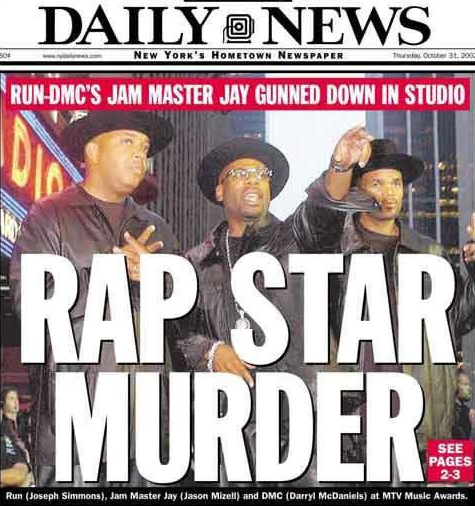
The New York Daily News on Oct. 31, 2002.
In the wake of Jam Master Jay’s death, Run-DMC’s legacy has only grown. Run-DMC has been widely recognized as one of the greatest Hip Hop groups of all time. They were inducted into the Rock & Roll Hall of Fame in 2009, becoming only the second Hip Hop group to receive that honor, after Grandmaster Flash and the Furious Five.
Late Career
Run-DMC’s final studio album, Crown Royal (2001), was a disappointing conclusion to their otherwise groundbreaking career. While it featured high-profile collaborations with artists like Nas, Kid Rock, and Limp Bizkit, the album lacked the cohesiveness and innovation that had defined their earlier work. Run-DMC seemed to take a backseat on many tracks, with guest artists overshadowing the group’s presence. The absence of DMC on most of the songs, due to his vocal issues and personal struggles at the time, further weakened the album, leaving it as a less impactful and somewhat disjointed effort compared to their previous releases.
Run and DMC have largely retired from making music together since JMJ’s death, but they continue to appear at events honoring their legacy and the broader Hip Hop culture they helped create. In recent years, there have been tributes, documentaries, and projects celebrating Run-DMC’s career, keeping their story alive for new generations. Even without new music, their influence is omnipresent.
Conclusion
Run-DMC’s career is one of the most significant in the history of Hip Hop. They transformed the genre from a localized New York phenomenon into a mainstream cultural force that continues to shape music and society today. Their blend of raw, minimalist beats, rock influences, and accessible lyricism changed the sound of Hip Hop and opened the door for countless artists to follow. From their fashion to their groundbreaking Adidas partnership, they influenced not only the music industry but also global culture.
Through ups and downs, personal struggles, and tragic loss, Run-DMC remained true to the core of Hip Hop. Their legacy is one of innovation, creativity, and resilience. They are not simply a group of rappers who achieved commercial success, but pioneers who altered the course of music history. Whether through their groundbreaking sound, iconic style, or cultural influence, Run-DMC’s story will forever be woven into the fabric of Hip Hop. Their impact is felt across generations and genres, and their music will continue to inspire, educate, and entertain for years to come.
